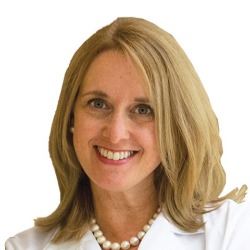Discover the benefits of pectus excavatum surgery from Lisa Smith, MD, pediatric surgeon with University Surgical Associates.
Whether or not pectus excavatum surgery is the right choice is a question that every individual or family has to make when it comes to correcting chest wall deformities. The decision to have surgery to correct pectus excavatum or carinatum is difficult one, and there’s no doubt that treatment is complex. Yet, according to Lisa Smith, MD, pediatric surgeon with University Surgical Associates, the benefits of surgery often outweigh the rigors of recovery. In addition to the corrected appearance of the chest wall, these procedures also help children and adults live a more active life.
“I believe there’s a large group of young adults who have been told or are being counseled that if they’ve made it into adulthood without having surgery to correct their pectus excavatum that they probably don’t need surgery,” says Dr. Smith. “I don’t believe that’s true, and in fact, many people don’t even realize what an impact their deformity is having on their exercise capacity and their ability to adequately perform routine activities.”
Pectus excavatum is a congenital chest wall deformity where the chest cartilage grows abnormally, producing a caved-in or concave appearance in the anterior chest wall. It’s the most common chest wall deformity in children and represents about 90 percent of cases. Pectus carinatum is thought to occur by the same mechanism, but the chest bows out. Pectus excavatum occurs in an estimated 1 in 300-400 births, and males are more likely to have the condition.
A YEAR UNLIKE ANY OTHER
According to Dr. Smith, many more adults reached out to her for consultation about pectus excavatum and carinatum correction during 2020 than typically do during a normal year. The change of routine brought on by the COVID-19 pandemic provided an opportunity for many to seek treatment that might otherwise be too busy to take time for recovery. And although things looked a little differently than in years past, Pectacular!, University Surgical Associates’ chest wall reconstruction program, continued to make improvements in the methods used to treat these condition and to refine the recovery process.
One such method was to change pain management protocols, moving away from a catheter-based system that had to be constantly maintained to a long-acting anesthetic injection. What started as a means to provide effective and safe care to reduce possible coronavirus exposures led to the discovery of a combination of pharmaceutical medications that offered even better pain control.
Dr. Smith notes that her passion for the Pectacular! program and the people who go through the process continues to grow as she witnesses the life-changing results for those who thought they had no good options for treatment.
“Until you change the mechanics of the chest wall and how it moves, people with these deformities will continue to have complications of the heart working harder than it should to keep up. My patients are blown away at the difference in how they feel after surgery,” says Dr. Smith.

“Even though it’s a difficult surgery and long recovery, there’s a great payoff at the end –allowing individuals the opportunity to breathe and perform physically like they’ve never done before.”
If you’re considering chest wall reconstruction for yourself or your child, we understand that you have questions – and we want to help in any way possible.
For more information visit our Pectacular! page or call (423) 267-0466 to schedule a consultation.





Leave A Comment